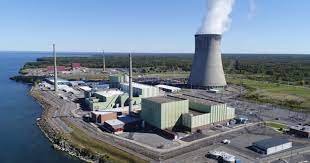Nuclear power could become a $10 trillion global market and help solve the world’s growing power shortages, according to a new report from Bank of America. The report says global nuclear capacity would need to triple by 2050 to meet rising electricity demand, especially from data centers driving the AI boom. It estimates more than $3 trillion will be invested in nuclear projects over the next 25 years.
Experts say nuclear energy is gaining momentum after years of decline. Timothy Fox, managing director at ClearView Energy Partners, said many data centers are looking for clean, steady power, and nuclear can provide it. Support from the Trump administration, along with improving public attitudes, has also helped boost the stock prices of companies in the nuclear supply chain this year. Bank of America analysts say nuclear energy has been “rediscovered” as electricity demand grows due to AI, electric vehicles, and industrial expansion.
Bank of America highlighted small modular reactors (SMRs) as one of the most important energy technologies for the next 25 years. SMRs are smaller and faster to build than traditional nuclear power plants. They typically produce up to 500 megawatts, compared to over 1,000 MW from large plants. Their modular design allows parts to be mass-produced and assembled on-site, reducing costs and construction time.
NuScale Power is the only U.S. company with an SMR design licensed by the federal Nuclear Regulatory Commission. It plans to bring its first reactor to market by 2030. Oklo, a startup backed by OpenAI’s Sam Altman, aims to deliver power by the end of 2027. Shares of both companies have surged this year, with NuScale up over 100% and Oklo jumping more than 350%.
Bank of America says nuclear power offers reliable, affordable, clean, and safe energy. It could act as a bridge until renewable energy sources are ready to operate at a larger scale. With rising demand, growing investor interest, and new technology like SMRs, nuclear energy could play a major role in the world’s future power supply.







